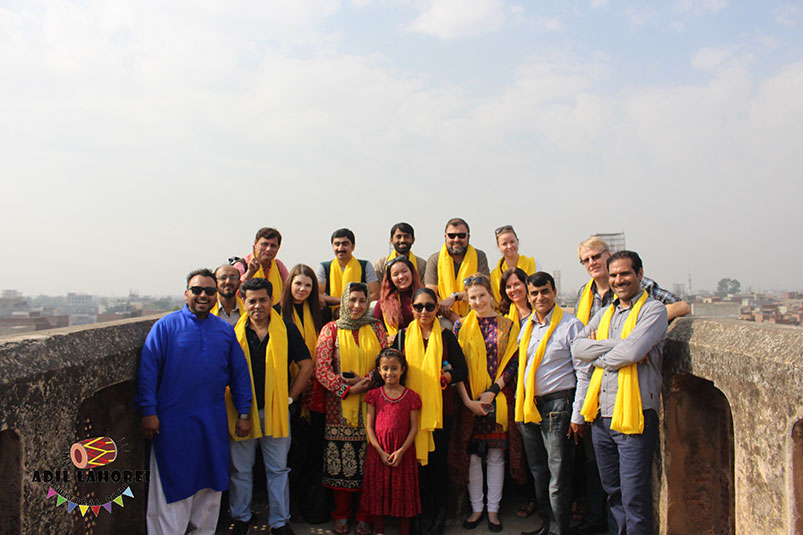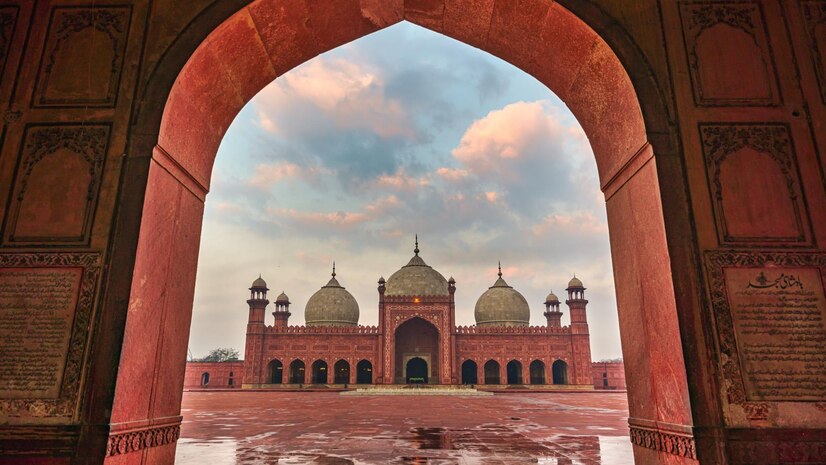INFORMATION FOR TOURISTS

Do’s & Don’ts : Customs Regulation Climate of Lahore Lahore features a five season semi-arid climate: foggy winter (15 Nov – 15 Feb) with few western disturbances causing rain; pleasant spring (16 Feb – 15 April); summer (15 April – June) with dust, rain storms and heat wave periods; rainy monsoon (July – 16 September); and dry autumn (16 September –14 November). The hottest month is June, where average highs routinely exceed 40 °C (104.0 °F). The wettest month is July, with heavy rainfalls and evening thunderstorms with the possibility of cloudbursts. The coolest month is January with dense fog. The city’s highest maximum temperature was 48.3 °C (118.9 °F) recorded on May 30, 1944 And 48 °C (118 °F) was recorded on June 9, 2007. The lowest temperature recorded in Lahore is –1°C, recorded on 13 January 1967. The highest rainfall in the city recorded during 24 hours is 221 millimetres (8.7 in), which occurred on 13 August 2008.
TOP TEN BOOKS ON LAHORE CITY

Top Ten Books On Lahore City 1. City of Sin and Splendour: Writings on Lahore The ancient whore, the handmaiden of dimly remembered Hindu kings, the courtesan of Mughal emperors’, the ‘Paris of the East’, Lahore is more than the grandeur of Mughal forts and gardens, mosques and mausoleums; the jewel colours of everlasting spring. It is also the city of poets, the city of love, longing, sin and splendour. This anthology brings together verse and prose: essays, stories, chronicles and profiles by people who have shared a relationship with Lahore. From the mystical poems of Madho Lal Hussain and Bulleh Shah to Iqbal’s ode and Faiz’s lament, from Maclagan and Aijazuddin’s historical treatises and Kipling’s ‘chronicles’ to Samina Quraeshi’s intricate portraits of the Old City and Irfan Husain’s delightful account of Lahori cuisine, City of Sin and Splendour is a marriage of the sacred and profane. While Pran Nevile paints a vivid sketch of Lahore’s Hira Mandi, Shahnaz Kureshy brings alive the legend of Anarkali and Khalid Hasan pays a tribute to the late ‘melody queen’ Nur Jehan. Mohsin Hamid’s essay on exile, Bina Shah’s account of the Karachi vs Lahore debate and Emma Duncan’s piece on elections are essential to the understanding of modern-day Lahore. But the city is also about Lahore remembered. Ved Mehta and Krishen Khanna write about ‘going back’ as Khushwant Singh writes about his pre-Partition years in Lahore. Sara Suleri’s memories of her hometown, the landscapes of Bapsi Sidhwa’s fiction, Khaled Ahmed’s homage to Intezar Hussain and Urvashi Butalia’s Ranamama are tributes to memory as much as they are tributes to remarkable lives and unforgettable places. Including fiction old and new—from Manto and Chughtai to Ashfaq Ahmed and Zulfikar Ghose; Saad Ashraf and Sorayya Khan to Mohsin Hamid and Rukhsana Ahmad, City of Sin and Splendour is a sumptuous collection that reflects the city it celebrates. Writer: Bapsi Sidhwa, Penguin Books, 01-Oct-2005 – Travel – 373 pages Online Book 2. illustrated Views of the 19th Century Aijazuddin, who, in researching this book, followed the route opened by T.H. Thornton and J. Lockwood Kipling in 1876. But working from a bedrock of literary sources did not lead to an easily accessible collection of engravings, prints and illustrations. Many of the original water colors, drawings and other works by amateur and professional artists in this book come from British collections such as the India Office Library, The National Army Museum and the Victoria and Albert Museum. These are supplemented by a collection built up by the author and his wife over a decade of searching. All the visuals are complimented by historical notes that help to create an integrated view of Lahore of the 19th century, of which so many adventurous and romantic accounts exist. “Anyone Intending To Write The History Of Lahore Requires The Tenacity Of A Mountaineer” Claims F.S. Writer: F.S. Aijazuddin, Mapin, 1991 – Architecture – 176 pages Online Book 3. Lahore: Portrait of a Lost City Som Anand spent his childhood and youth in Lahore where his father Faqir Chand Anand was a respected banker. Som grew up totally free of religious communalism because he consorted with who shared his world view. When Partition took place the Anands decided to stay on in Model Town and Som was a witness of the communal excesses which took place at the time. In this loving and sensitive memoir which recalls a pre-partition Lahore of harmony and peace Sam seeks to restore his spiritual link with the great city of his childhood. In Model Town the suburban hideout of the wealthy aristocracy the Hindus and Muslims lived in social isolation from each other but were friendly. In Icchra Lahore’s suburban village Som consorted with the followers of Allama Mashriqi. In the inner city he mixed with the Fakirs of Fakir Khans. He saw Ataullah Shah Bukhari calm down a crowd that had just broken the head of Zafar Ali Khan the editor of Zamindar. He was friendly with the Bedis and knew Englishwoman Freda Bedi who wrote her book about Punjabi women while she waited for her communist husband to be released from prison. The book is full of anecdotes and stories which should both delight and sadden many people across both sides of the historical divide. Writer: Som Anand, Vanguard Books, 01 Jan 1998 – Hindus – 237 pages Online Book 4. Lahore: A Memoir This book is not an historical dissertation. It is simply a collection of various episodes from the days the author spent in Lahore. He first came into contact with the city in 1927. Since then, he has witnessed its growth and, in certain areas, its deterioration. There may not be a logical sequence in the narration of events, for they represent diverse impressions and experiences. Yet they make a whole, as scattered landmarks in a city – some even miles apart – do. In no way were these essays designed to reflect only the elite life of a metropolis, for the author himself is a commoner, nor was the book designed to bring back the past, for Lahore is a city of the future as well.‘Lahore: A Memoir‘ is about the ‘half-century’ of a city that greatly contributed to all political and cultural movements in the sub-continent during the most momentous years of its history. The Author: Muhammad Saeed, born 1911, at Kalaswala, Sialkot District, was educated at Islamia College Lahore and Aligarh Muslim University. He is a journalist who has worked with daily Shahbaz, Dawn, The Times of Karachi, The Civil & Military Gazette, and The Pakistan Times, which he edited in 1979. He is the author of ‘Ahang-i-Bazgasht‘ an autobiography that describes the subcontinent’s independence struggle and ‘Bahazrat-i-Dost‘, a collection of speeches at various fora. Writer: Muhammad Saeed, Published year: 1989 – 279 pages Online Book 5. Lahore: A Sentimental Journey The book, sentimental Journey of Lahore reminds people of what Lahore was really like before the independence of Pakistan in 1947, the way Hindus, Sikhs and Muslims lived ensemble. He gives the reader a taste of what Lahore is really like. His book reminisces his childhood memories and gives an opportunity to the reader to see


